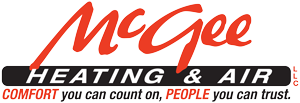Winter is the worst time of year for your heating system to fail. Even given the relatively mild winters in Elberton, GA, a furnace collapse can bring a lot of annoyance in its wake. Here are a few signs of impending furnace failure:
Age of the Furnace
No furnace can last forever. While careful repairs and responsible maintenance can stave off the date of its failure somewhat, a final breakdown is always inevitable. That’s why one of your first steps should be determining the age of the system.
Different types of furnaces have different average lifespans. For gas-powered furnaces, this tends to be anywhere from 15 to 20 years. For electric furnaces or ones that run on heating oil, it’s more like 25 to 30 years.
Remember that these figures are only averages. If you take excellent care of your heating system, it may last somewhat longer, while if you neglect maintenance, it’ll fail sooner. To be truly sure whether your furnace is about to fail, you should watch for other signs.
Skyrocketing Heating Bills
Of course, it’s completely normal for your heating bills to rise during the winter. However, any increase that you notice should be roughly comparable to the increase that you had seen during previous winters.
If your heating bills suddenly explode to multiples of their previous level, despite you not increasing your furnace use enough to justify this, you can be sure that something is wrong. Something has happened to vastly decrease your furnace’s efficiency. Any number of critical parts may have failed or be on the verge of failing.
It’s the job of a furnace repair service technician to discover exactly what has caused this situation. It’s entirely possible that this problem, while fixable, may not be worth fixing because it’ll just reappear again. In that case, you should get a new heating system.
Repeated Thermostat Tweaking
Once you set your thermostat to a comfortable temperature, your heating system should be able to consistently heat your home up to that level. You shouldn’t need to constantly adjust your thermostat. Doing so doesn’t help anyway because setting a higher temperature won’t force your furnace to expel heat faster.
However, if you find yourself compelled to play with your thermostat because your furnace can’t seem to bring things up to the desired level, that’s a sign of a problem. The problem could lie with your thermostat, but it could also lie with the furnace itself. It’s an HVAC service technician’s job to find out the truth here.
Cold Spots
Your furnace should heat your entire home evenly. Unless you’ve specifically arranged to split your home into different cooling zones, no place should feel warmer or cooler than another. If there are cold spots in your home, that indicates that your furnace likely has either airflow or gas flow issues.
Pilot Light Changes
Your furnace’s pilot light should always burn a solid blue color. If it turns yellow, this indicates that carbon monoxide is leaking from your furnace. If it flickers faintly or goes out entirely, this suggests that your furnace has gas flow problems.
Carbon monoxide is highly toxic, so a yellow pilot light is a dire sign that you should immediately leave your home and request to have a professional repair your furnace. Poor gas flow could either result from the valves near the burner filling up with soot, or it may be a reaction by the furnace in response to leaking carbon monoxide.
Don’t let a lack of knowledge force you into an uncomfortable position this winter. Now that you know when a furnace failure is close at hand, you can do something about it. Call McGee Heating & Air Inc. for the best furnace installation services in Elberton, GA.
Image provided by iStock

